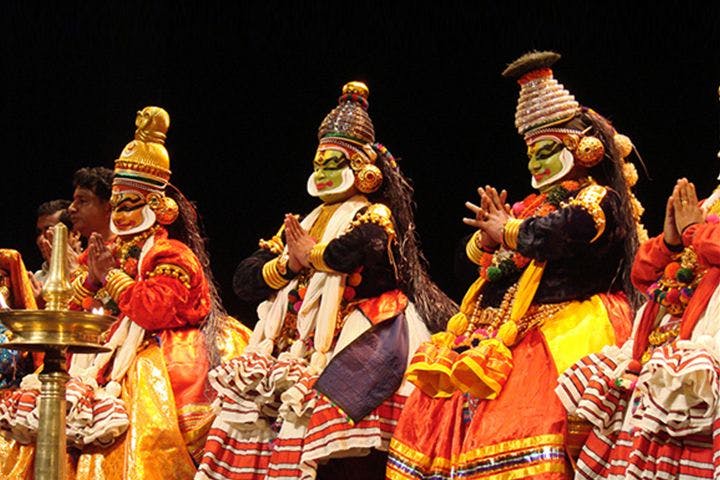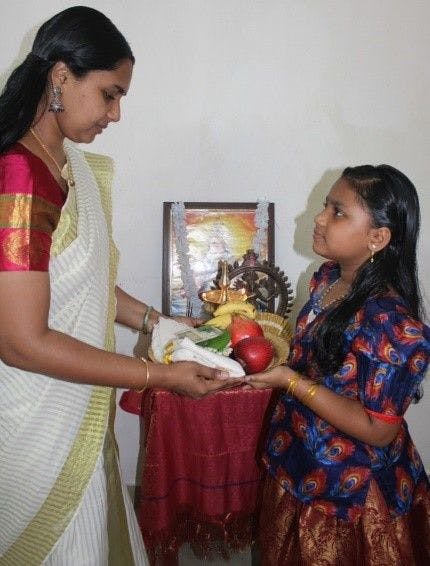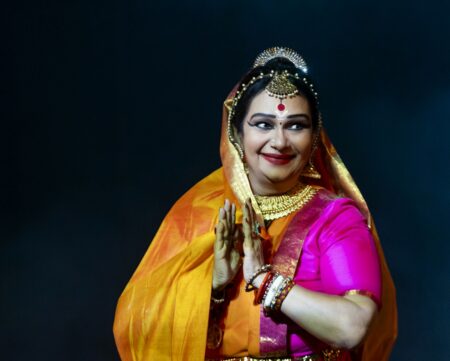The centuries old guru-shishya tradition, sacred to Mohiniyattam and other classical art forms, continues to be the first step to initiation even today.
Mohiniyattam, Esoteric Traits: Part 1
At some point in their pursuit of knowledge and excellence, the patrons and connoisseurs of dance need to be aware of the stories and struggles surrounding the birth, evolution and the revival of the art form, in this case, of Mohiniyattam. The story itself could form an inspiration for many to learn a particular dance form. This has been my effort and intention while writing the series The Occult Origins of Mohiniyattam for India Art Review.
So far, my articles described the origins of Mohiniyattam eliciting the long tradition of female dance forms of Kerala from the Sangham periods to the revival of Mohiniyattam and its different styles in the 20th century.
Now, going further on the same road, I intend to write a new set of articles — Mohiniyattam, Esoteric Traits — to explore the movements, acting and story-telling techniques used in Mohiniyattam. The plan now is to focus on the esoteric nuances related to dramatics, philosophy and spirituality.
Initiating a student
The current article, for instance, gives an account of how a young student is initiated into Mohiniyattam dance by providing a step-by-step account of the initial lessons and interpretation of the spirit underlying some of the traditions.
Kerala is a treasure trove of traditional arts that were evolved by a civilisation that existed here for over 2,000 years. There are over 300 art forms that are still practised in Kerala, the most prominent among them being Koothu, Koodiyattam, Kathakali, Mohiniyattam, Krishnanattam, Thullal, Theyyam, Patayani and various puppet plays practised in different parts of Kerala.
Arts have been integral part of the Kerala community with vast majority of them have affiliated to different temple traditions. The social order that existed in the ancient times with the temple (or other religions institutions) as the integral seat of culture resulted in great patronage for arts, music and dance.

Princely states and local landlords acted as key patrons of art forms in the past. While the princes of Cochin were the foremost in fostering Koothu and Kudiyattam, the Zamorin rulers of Kozhikode patronised Krishnanattam. Similarly the princes of Kottarakkara nurtured Ramanattam and the rulers of Kodungallur maintained an acting laboratory that researched nuances of acting techniques. The royal family of Travancore nurtured classical music and dance for a long period of time.
Kaisiki style
Among the various styles of dancing traditions that exist in Kerala, Mohiniyattam belongs to the Kaisiki style as described in Bharathamuni’s Natya Shastra. The style is characterised by gentle angaharas, and embodies the lasya style of dancing, which is often interpreted as feminine, tender and graceful. The Kaisiki style is appropriate for the enacting of love and erotic sentiments. The continuous, circular or semi-circular movements that are characteristic of this dance is often compared to the sway that a breeze sets in a paddy field.
Guru Dakshina: The tradition of reverence

In this series, we aim to analyse the basic principles and esoteric interpretations of the Mohiniyattam style. Like the other dance forms of India, Mohiniyattam follows the gurukula system or the residential school prevalent from the Vedic ages. A serious student starts learning from a dedicated and knowledgeable guru. Learning starts by offering guru dakshina to the guru, a custom by which the student formally becomes the shishya of the teacher.
The student offers betel leaves, ripe and whole areca nuts and some coins (money) to the teacher. The student submits him/herself at the feet of the God and the guru and prays for her success in learning the art form. After the offerings are placed in the hands of the guru with both hands, the student touches the guru’s feet with both hands and prostrates in front of him/her, then touches her eyes and gets up.

The guru usually touches the head of the student to bless him/her. The student uses the Pallava hasta to touch the feet. After this formal exchange, the guru initiates the student into the world of dance. The student is first taught how to do the Namaskaram or offering respectful salutations.
(Assisted by Sreekanth Janardhanan)
Write to us at [email protected]




